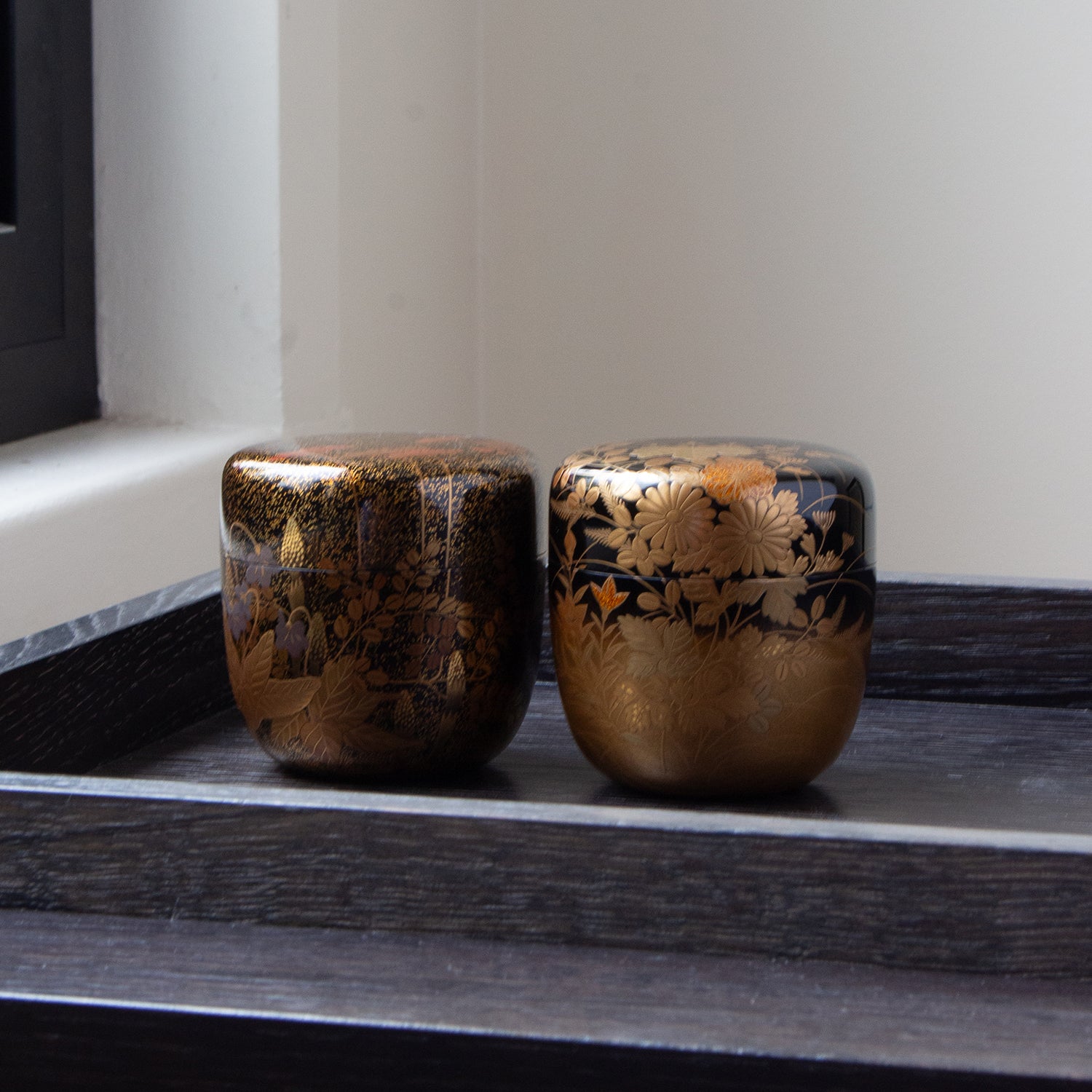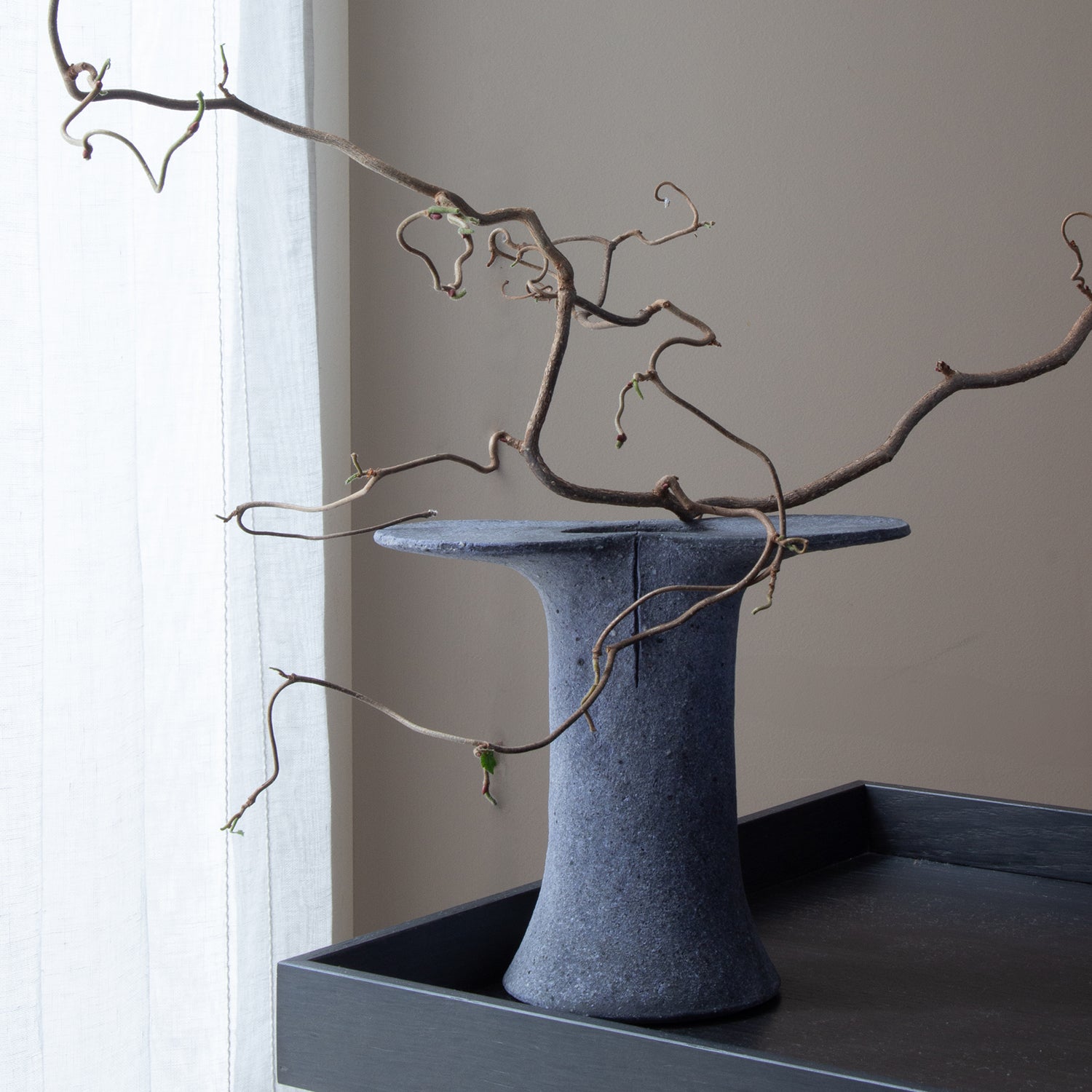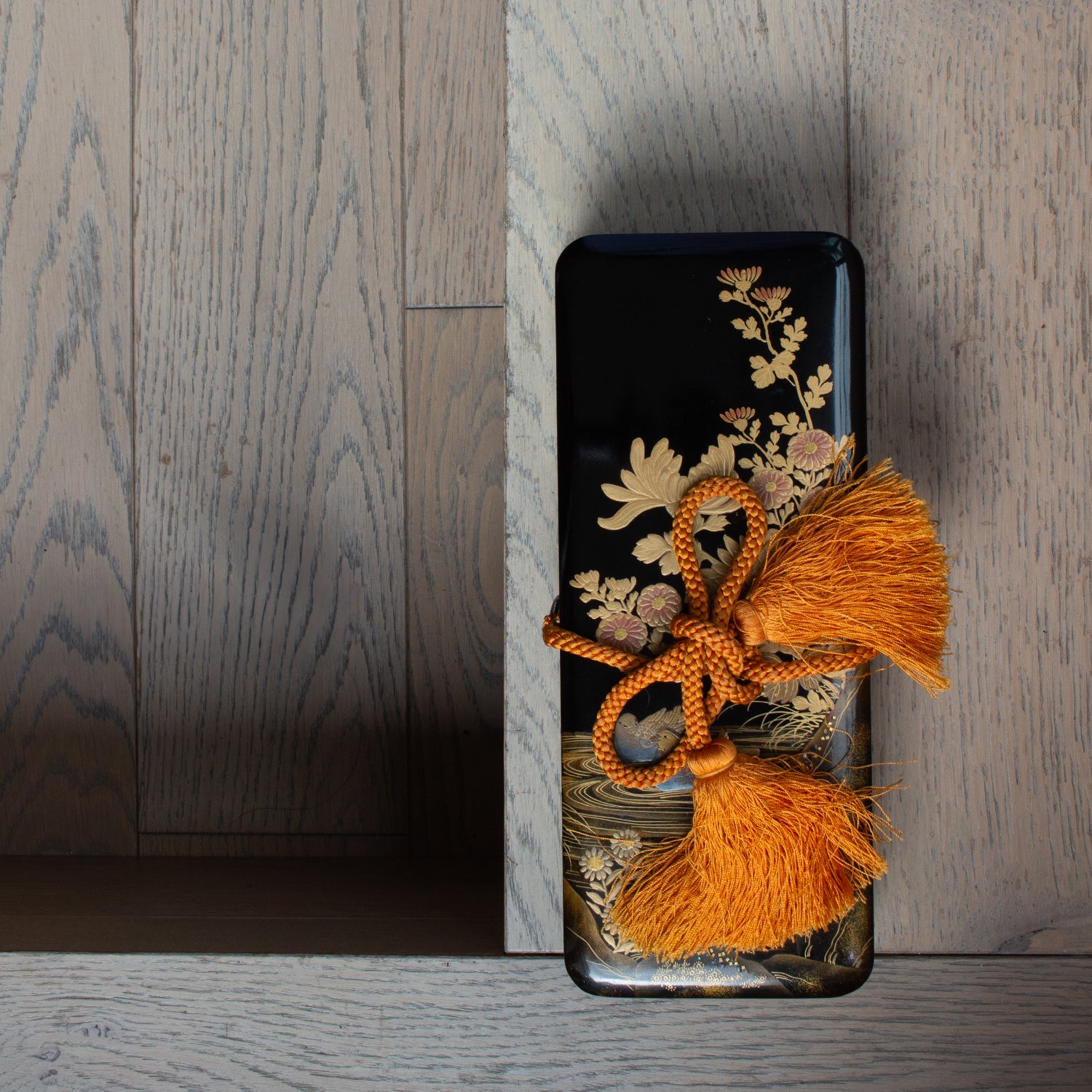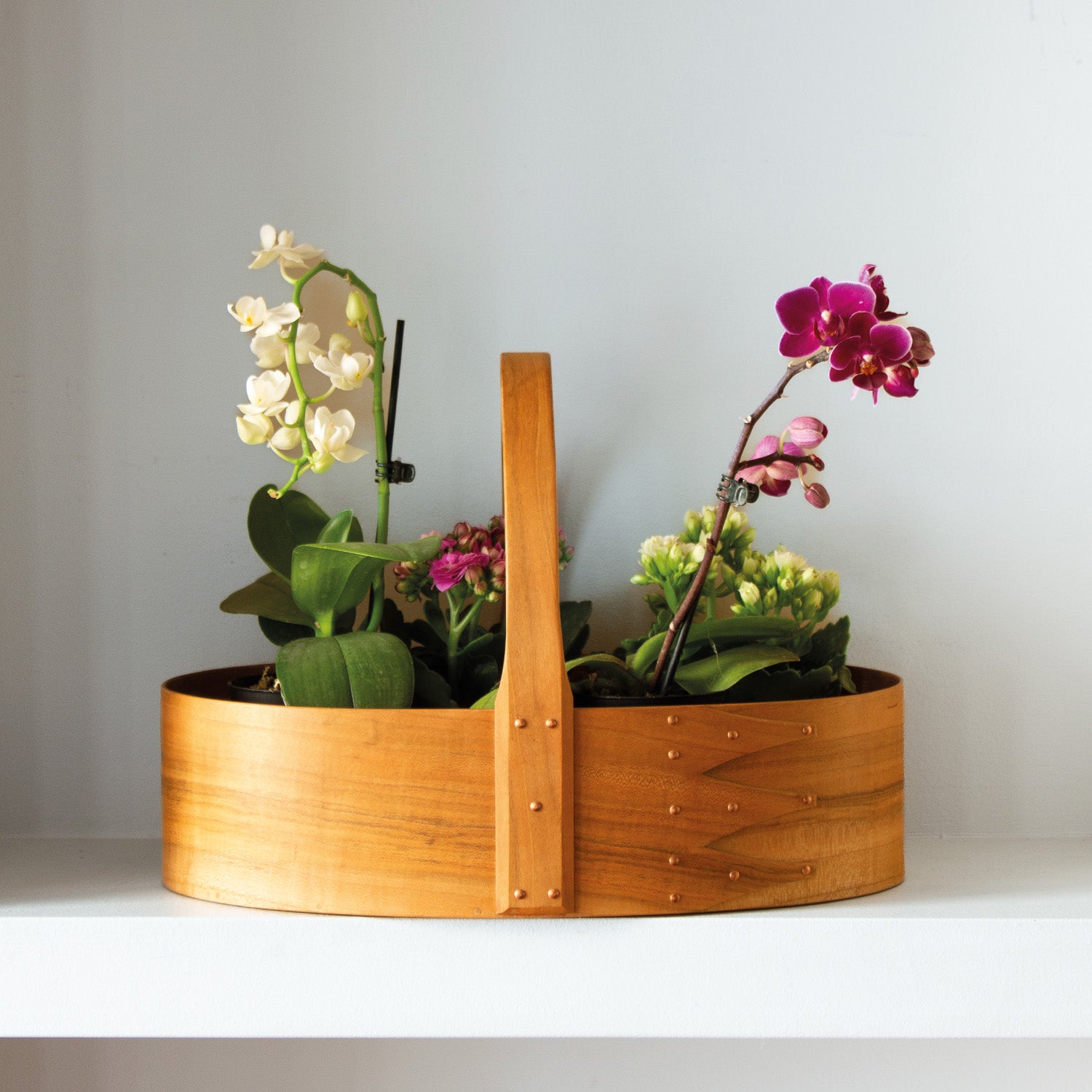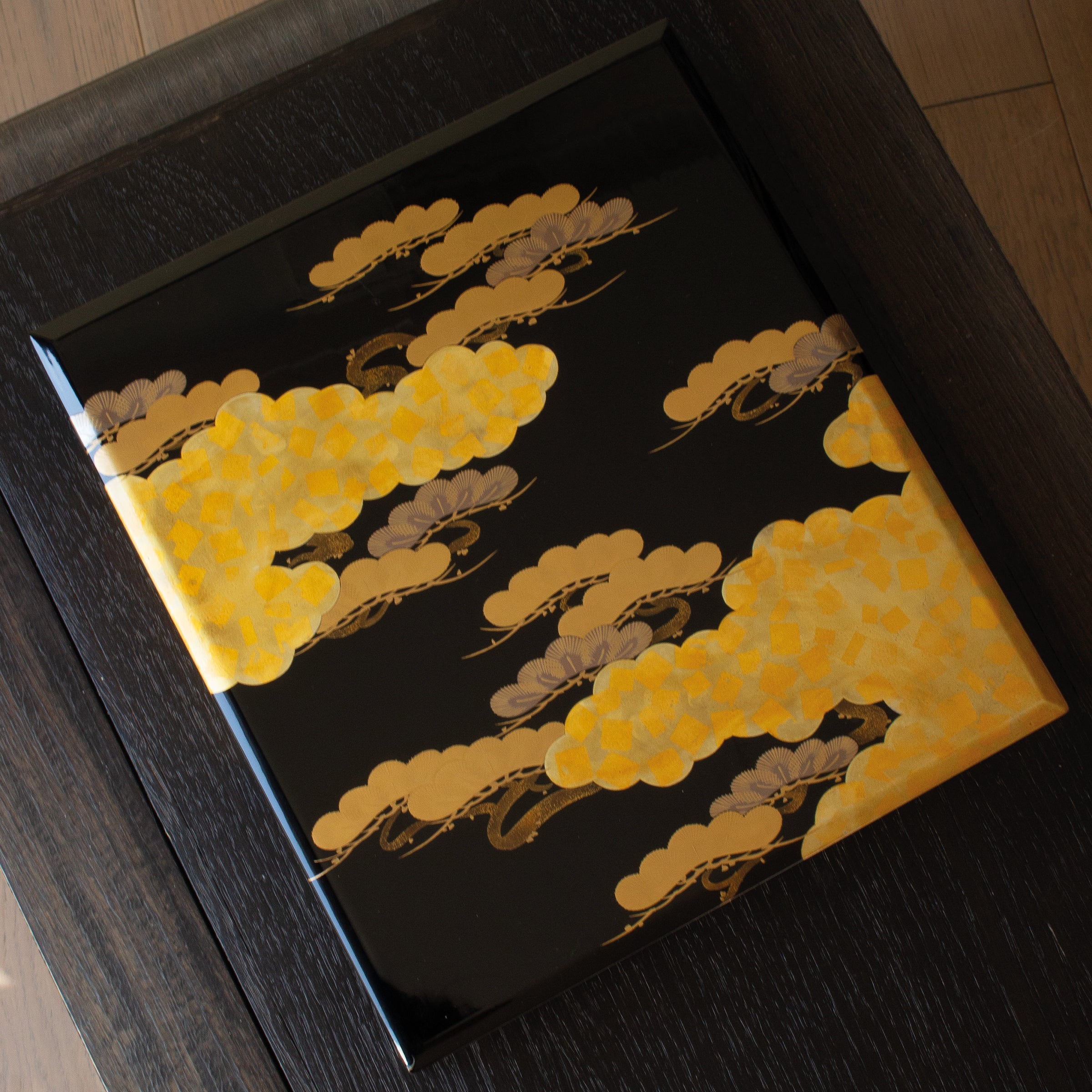
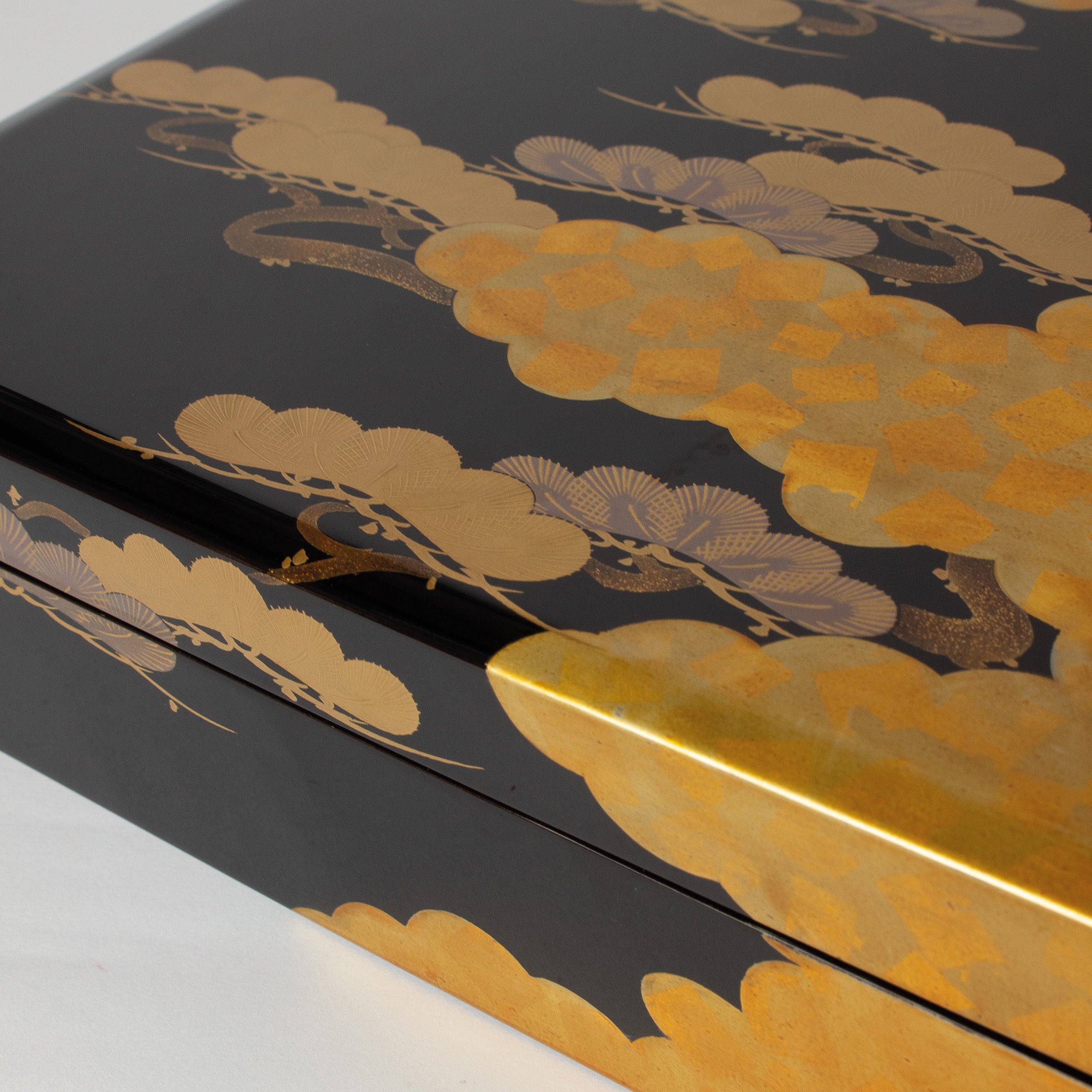
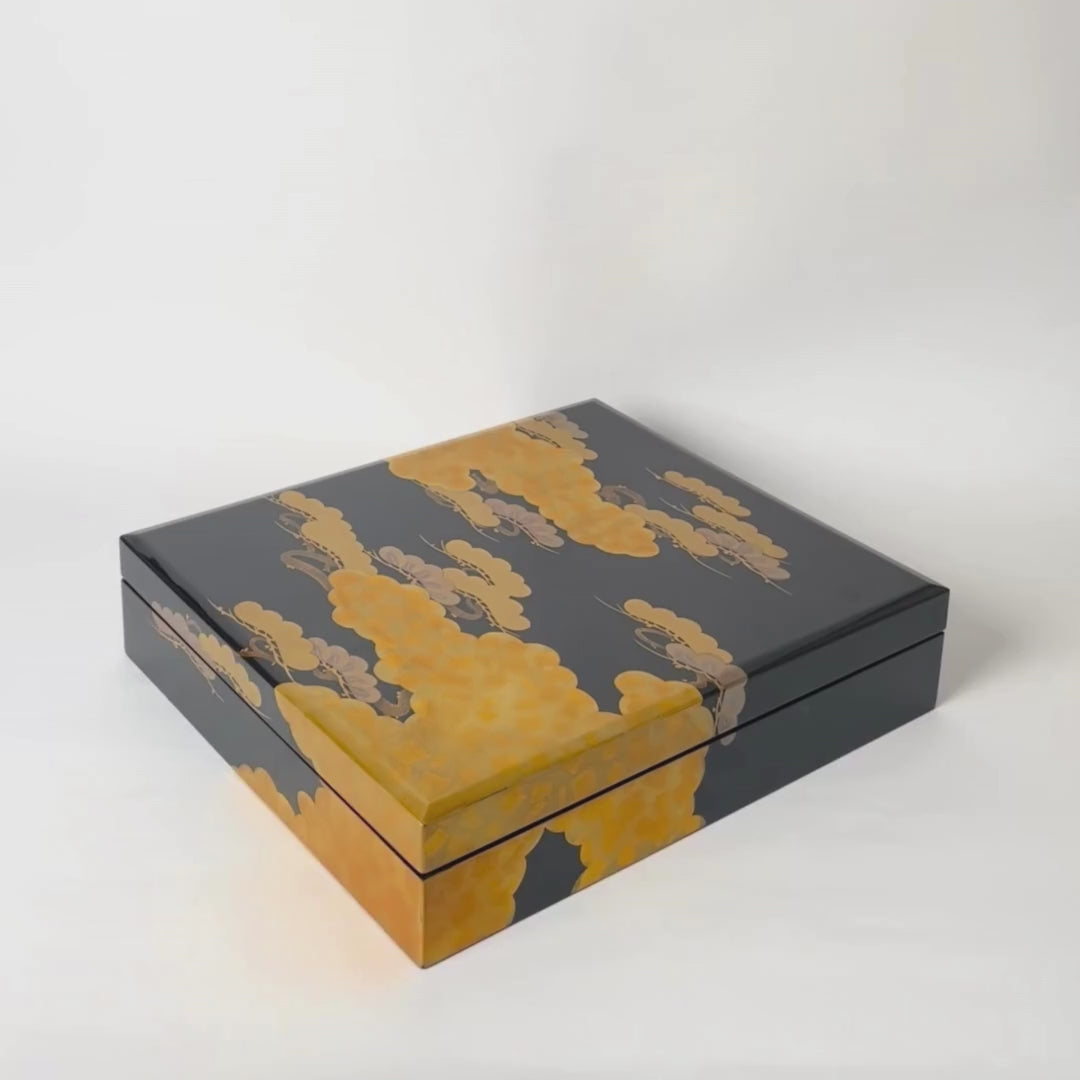
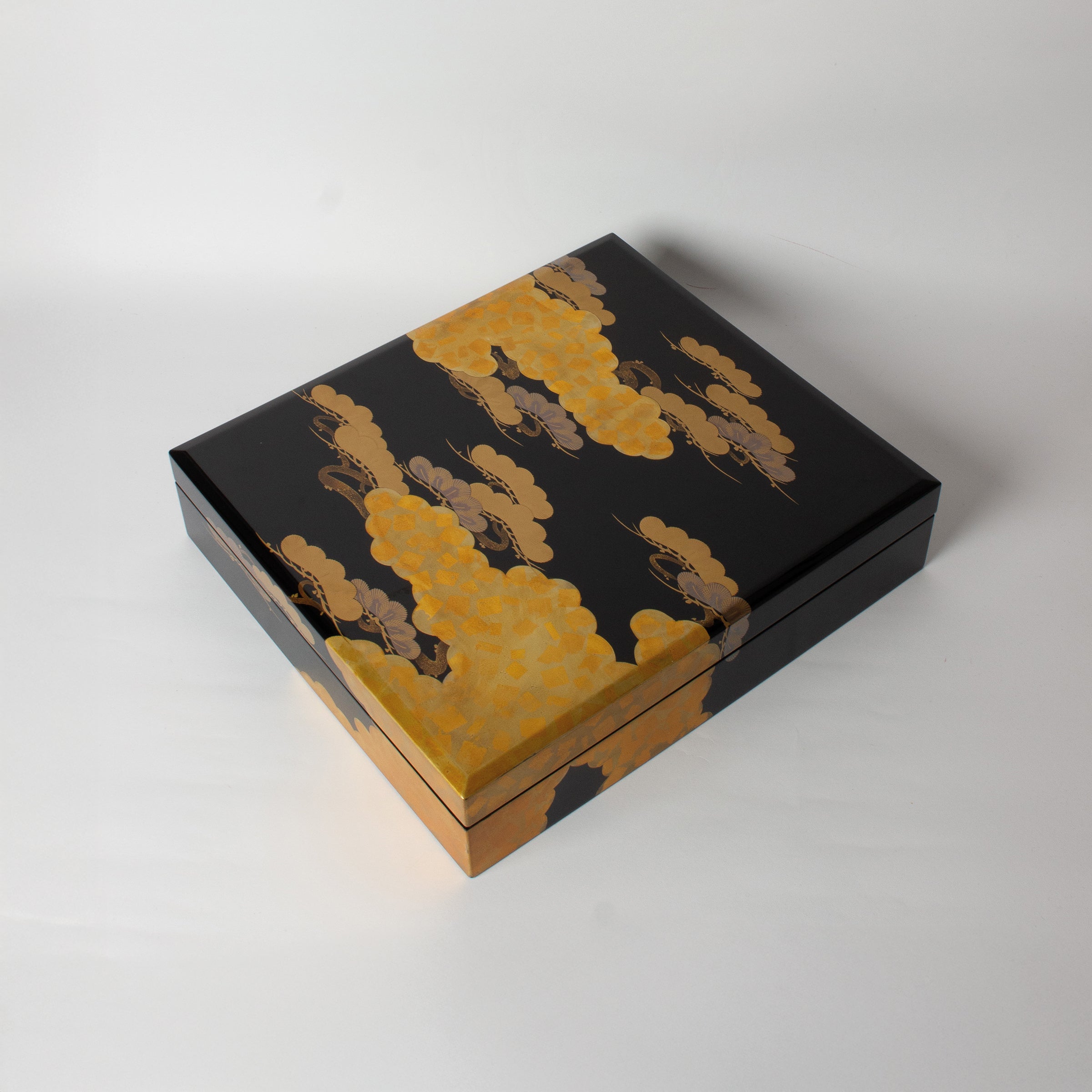
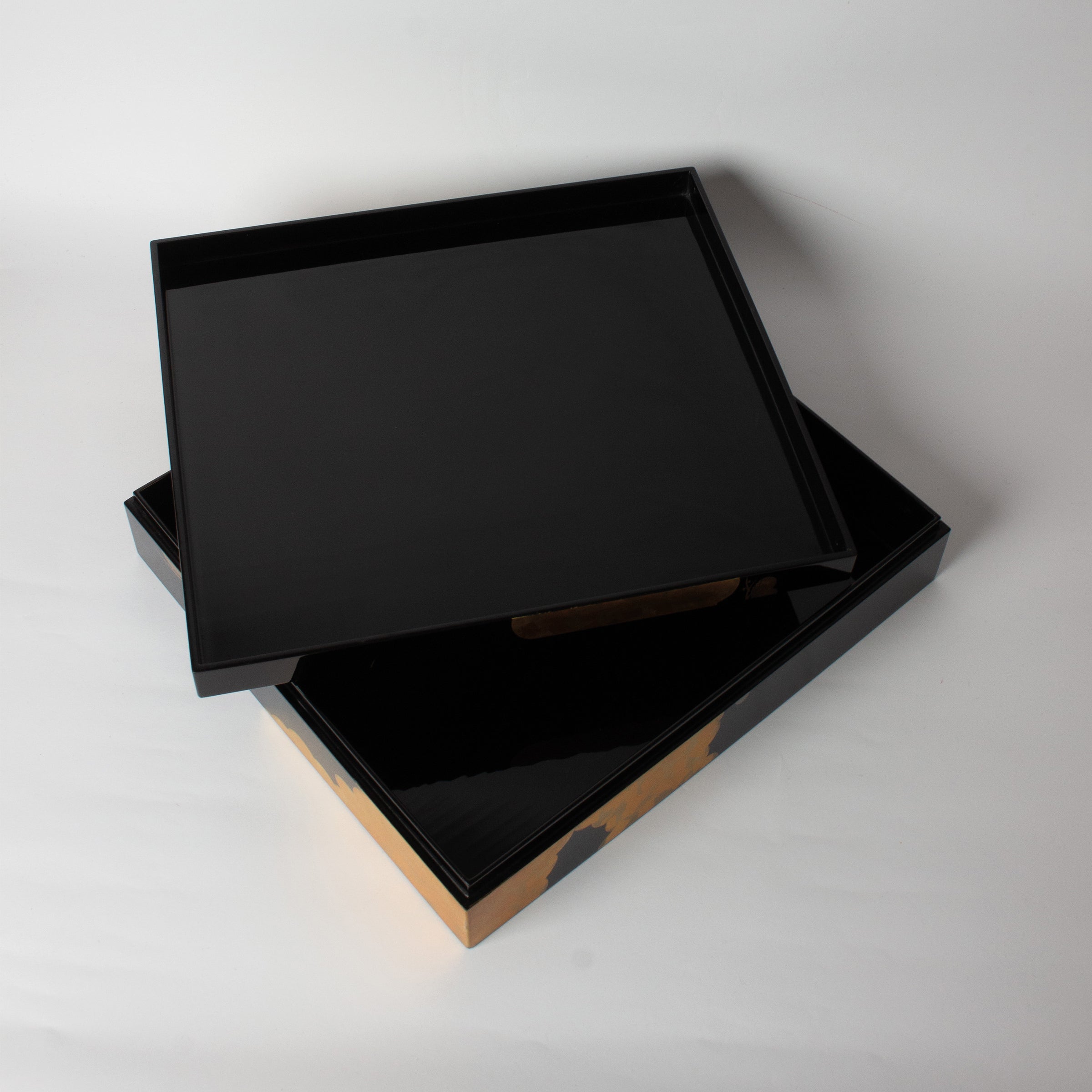
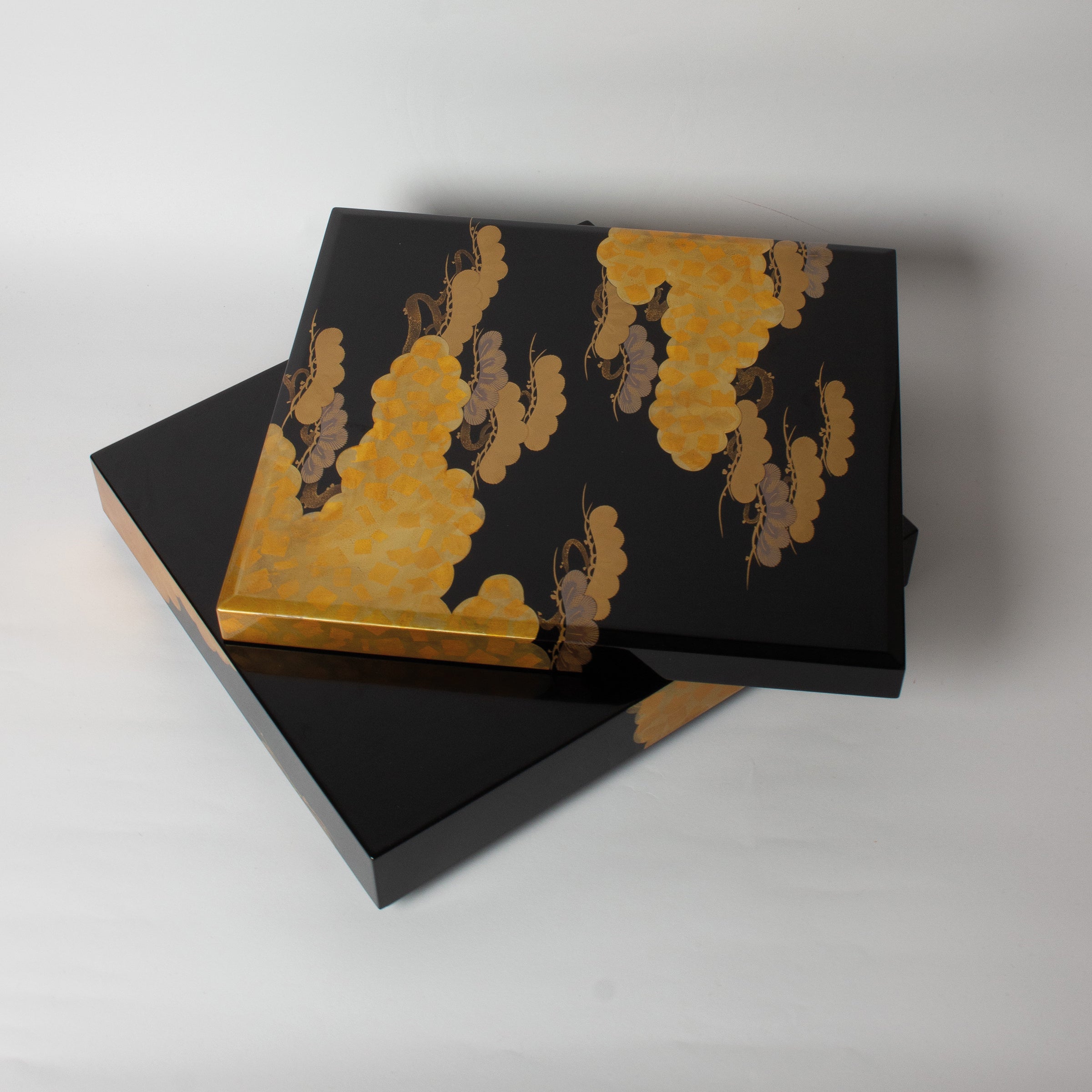
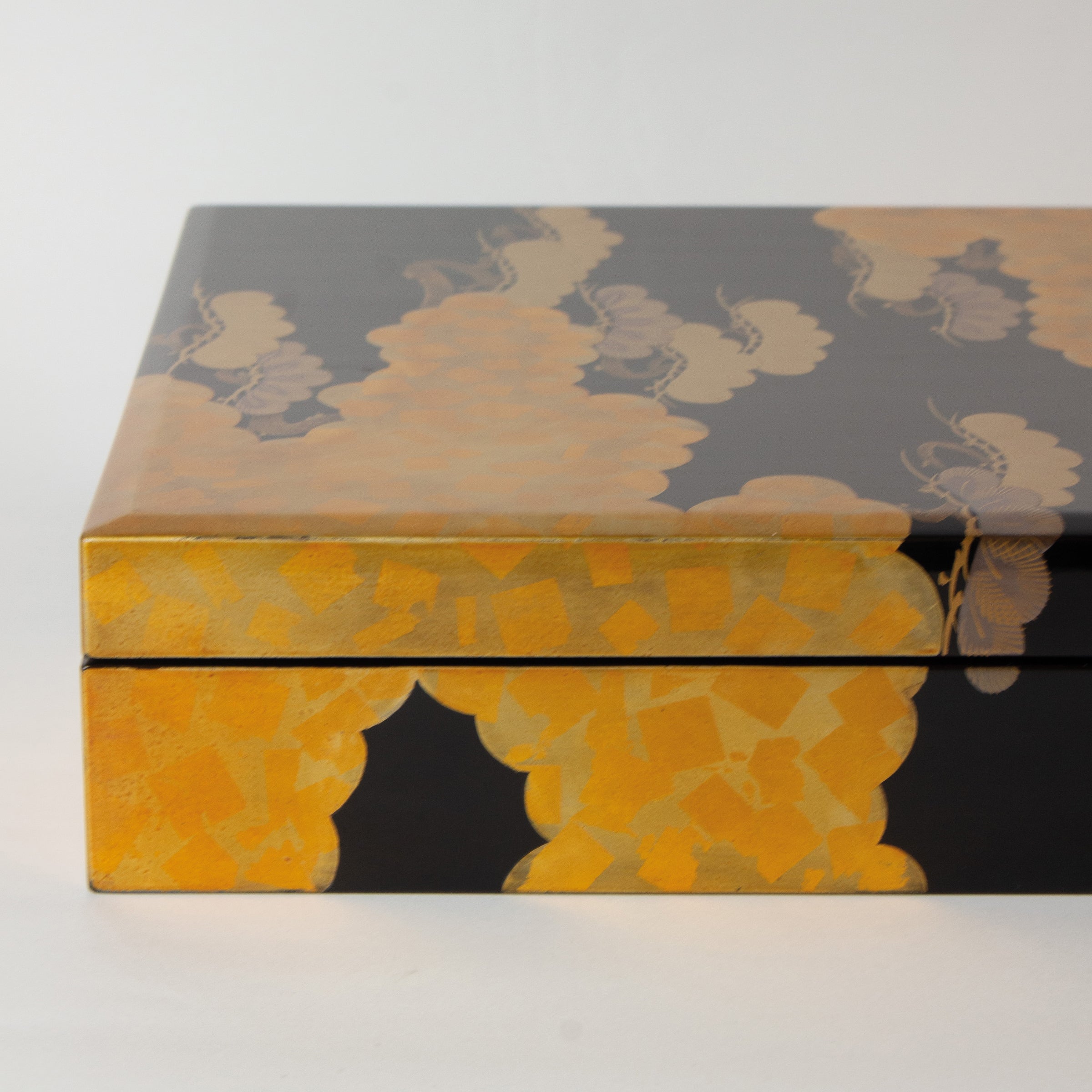
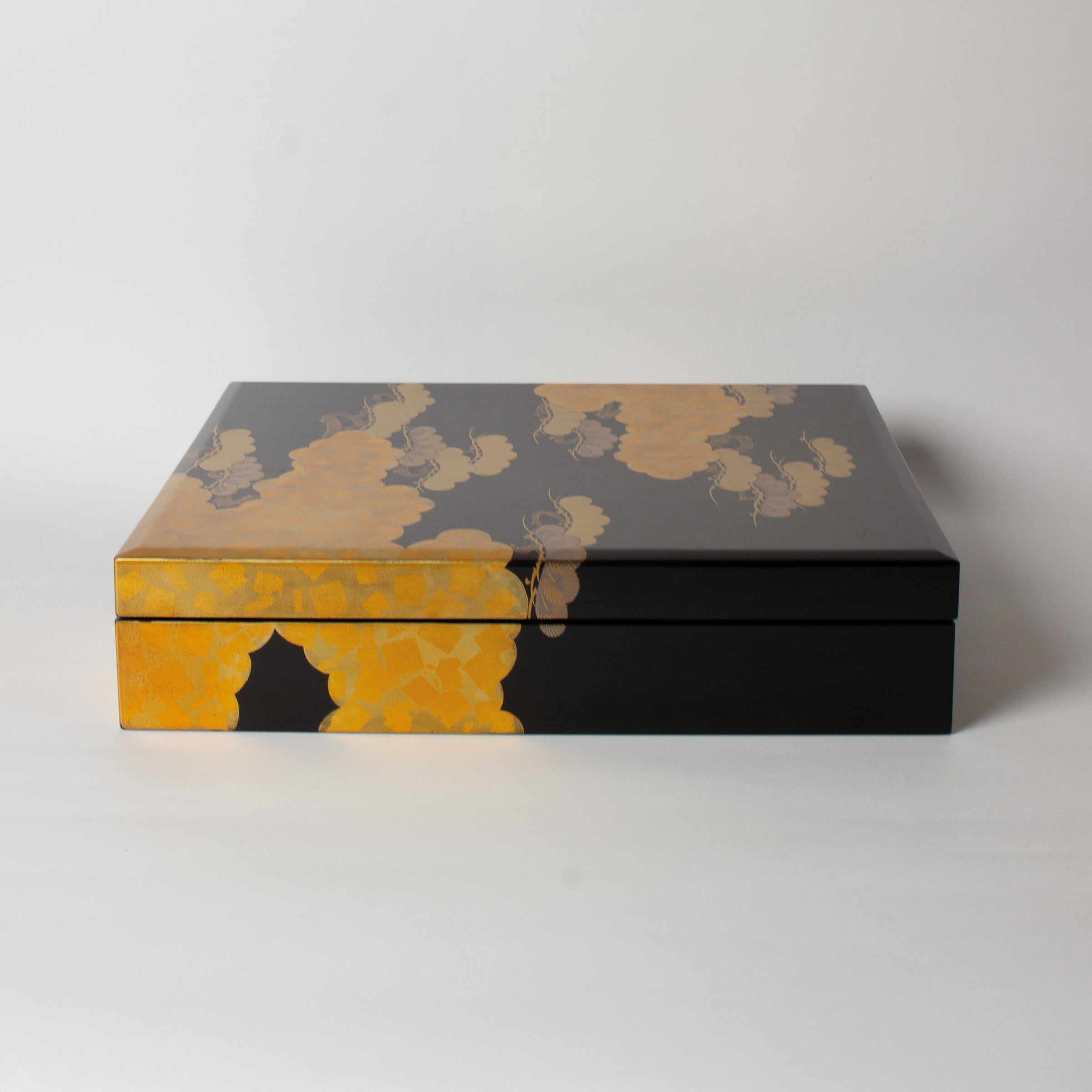
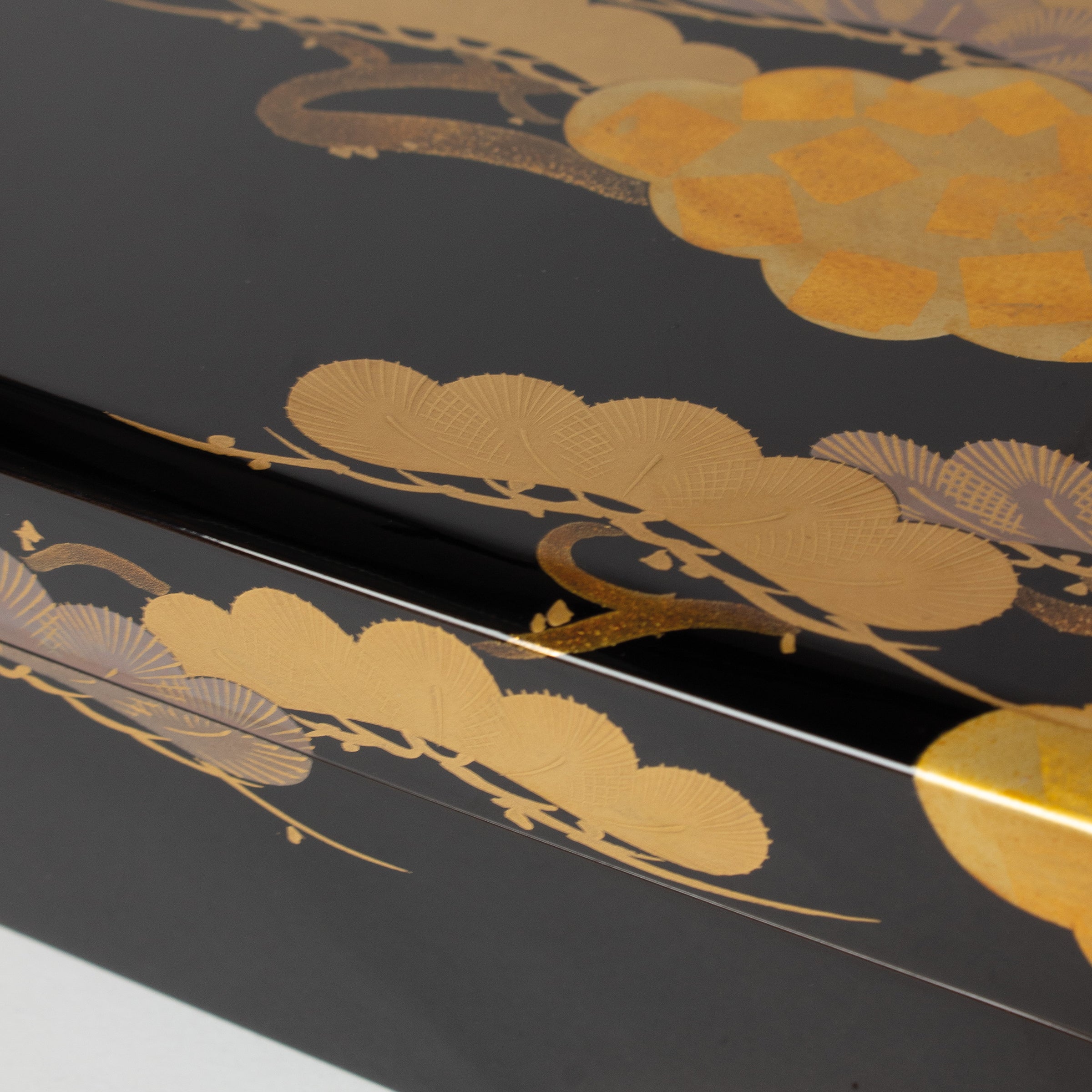
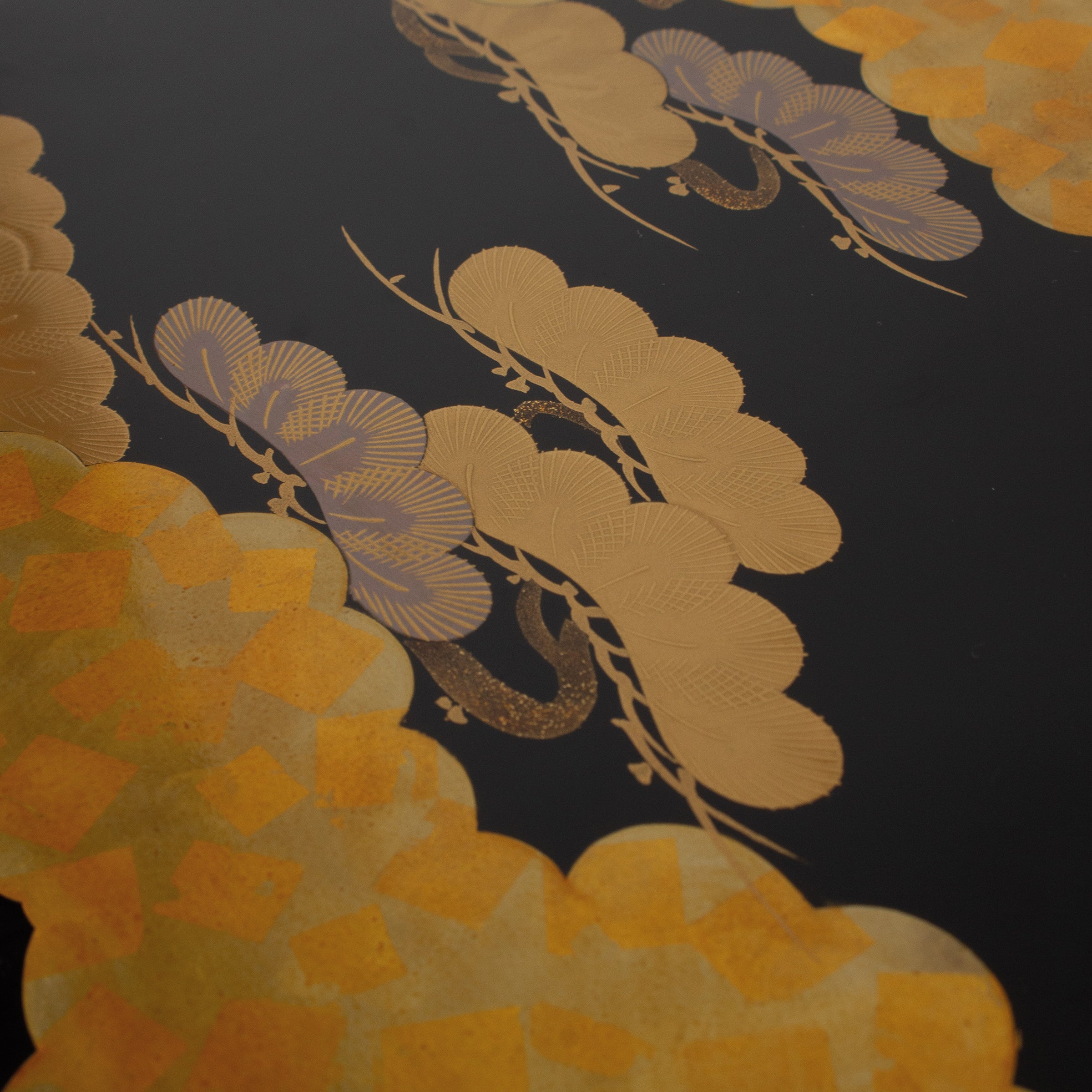
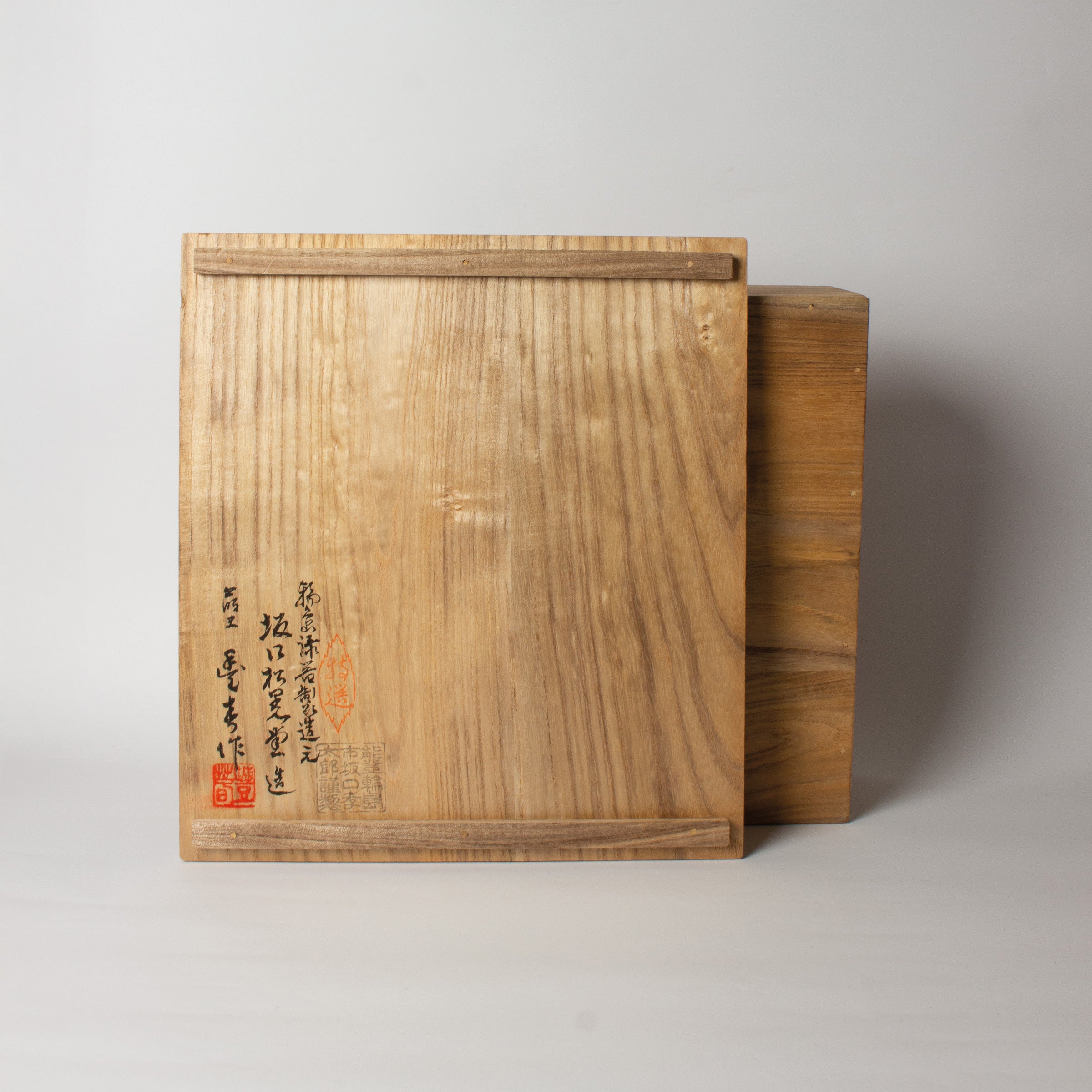
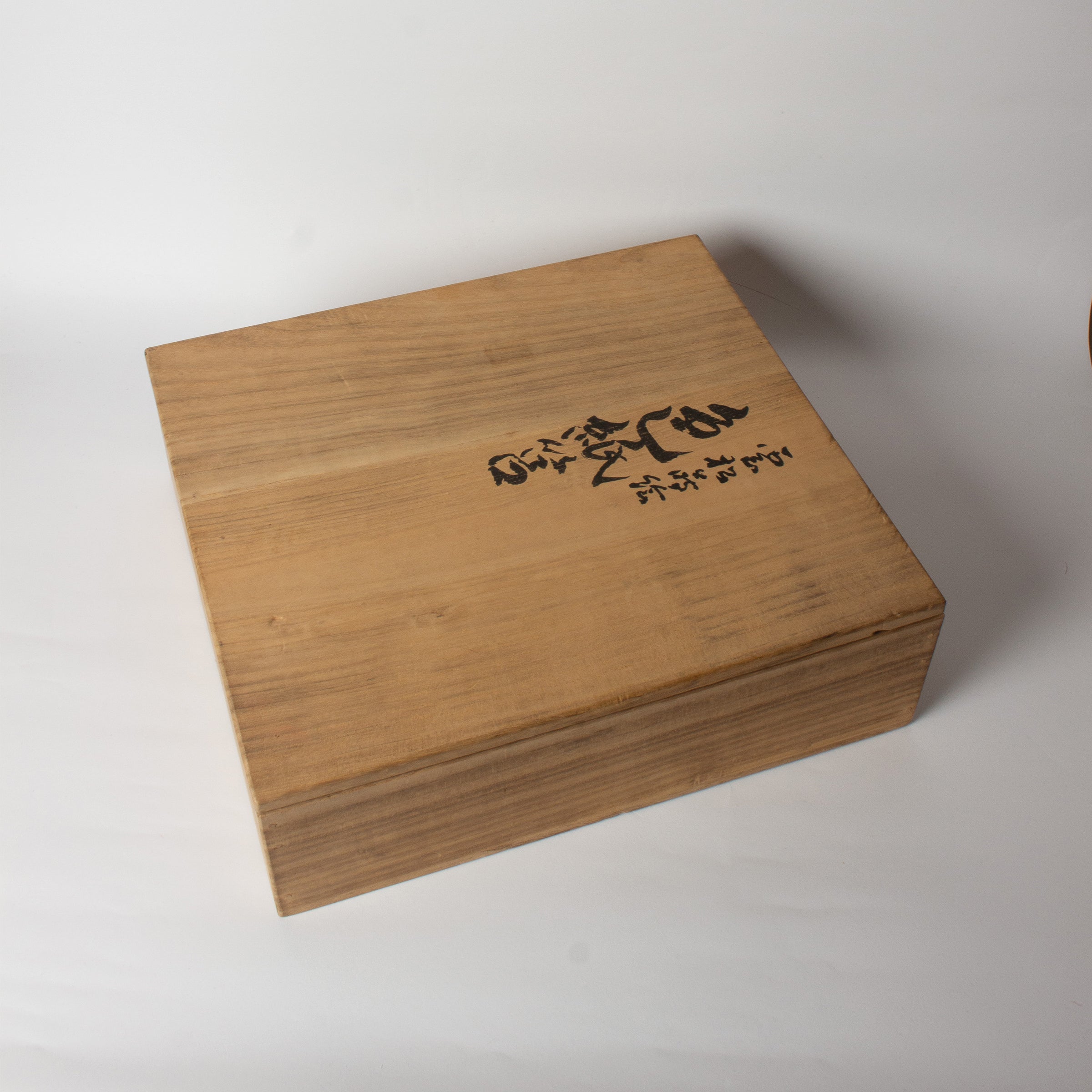
Box by Kawahara Toyoharu, urushi lacquer by Wajima, cloud and pine maki-e (gold powder) decoration
Contemporary rectangular box in urushi lacquered wood very deep and brilliant, made in Wajima by the Sakaguchi Shokōdō workshop, with a superb decoration signed by master lacquerer Kawahara Toyoharu, specialist in maki-e (gold powder decoration).
The lid's decoration depicts clouds intertwined with stylized pine trees, punctuated by small gold squares arranged in a checkerboard pattern. Created using hira maki-e—a technique of sprinkling gold powder onto a thin layer of still-wet lacquer and then polishing the surface to create a smooth, glossy pattern—this design evokes traditional Japanese symbols: clouds, associated with elevation and the immaterial world, and pine trees (matsu), symbols of longevity and quiet strength.
This generously sized letter box (fubako) (29.3 cm long, 26.2 cm wide, 6.5 cm high) was once used to carefully store documents, letters and personal papers. Today, it can hold notebooks, valuable papers or objects.
This is a contemporary piece. It comes with its protective paulownia wood box (tomobako), signed in ink on the inside of the lid with the workshop name, the artisan's name, and their seal.
Wajima lacquerware, or Wajima-nuri, is one of Japan's most renowned lacquerware, particularly prized for its depth, durability, and sophistication. The Noto Peninsula, where Wajima City is located, was struck by a devastating earthquake on January 1, 2024, and many lacquer artisans lost their tools of work. We hope that the invaluable legacy of these skills will continue, even if it takes time to rebuild.
|
|
JAPAN |
|
|
(box only) Length 29.3cm x Width 26.2cm x Height 6.5cm |
| WEIGHT | (total) 1050gr |
| COMPOSITION |
|
KNOW-HOW
Traditional Japanese lacquer, urushi, comes from the sap of the lacquer tree (Rhus Verniciflua), which flows after incision of the bark. It is a very precious material, a tree will give a maximum of 200ml of sap in its life, which is worked by specialized craftsmen. It takes many operations, slow and meticulous, and several months of work to bring real lacquer objects to life. It is the oldest craft in Japan! Initially used to protect and waterproof objects, this immutable craft has become an art of extreme sophistication. If you want to know more about the art of Japanese lacquer, you can read our dedicated article > .
DELIVERY
Delivery
Free delivery in metropolitan France for purchases over €150. Orders are generally sent within 2 working days, except in special cases announced in the banner at the top of the site.
Precious items are wrapped in beautiful cloth, beautifully tied in the precious art of Korean pojagi. Some exceptions apply, especially if the items are bulky. Learn more >
Detailed information on deliveries is available via this link >
Your invoice will be sent by email
Payment methods
By card (Stripe operator): Visa, MasterCard, Discover, American Express.
Secure card payment with 3D Secure.
By PayPal, Apple Pay, Google Pay and Shop Pay
Returns and exchanges
14 days to change your mind.
CARE INSTRUCTIONS
Clean with a very soft cloth to avoid scratches, soaked in a little warm water if necessary (never soak your lacquer objects). No microwave, dishwasher, dryer. Do not expose to direct sunlight for a long time (risk of discoloration). If the atmosphere is very dry and very hot, and to avoid the risk of cracking, you can place a glass filled with water next to your lacquer object.
Choose options

The art of wrapping
The exceptional items are wrapped in a beautiful fabric beautifully knotted using the little-known art of Korean pojagi and decorated with a delightful maedup (Korean ornamental knot). Details and conditions >


